Ettore Spalletti (Cappelle sul Tavo, 1940 - Spoltore, 2019), one of the major Italian artists of the second half of the twentieth century, is known for creating a profound union between painting and sculpture by creating three-dimensional works that extend into space, on which he applied dense brushstrokes of color.
The fundamental themes of his research concern precisely the relationship between work and space, which are interconnected and both contribute to the constitution of artistic form, and color.Light blue is the color that most recurs in his works, but pink, gray and green are also present, reverberated and enhanced by the light that is thoroughly cared for by the artist, who tends to fill entire spaces with color so that the work of art is experienced as a spiritual experience and suspended from reality. Deeply connected to his homeland,Abruzzo, the colors he uses often recall the typical hues of the Adriatic coast.
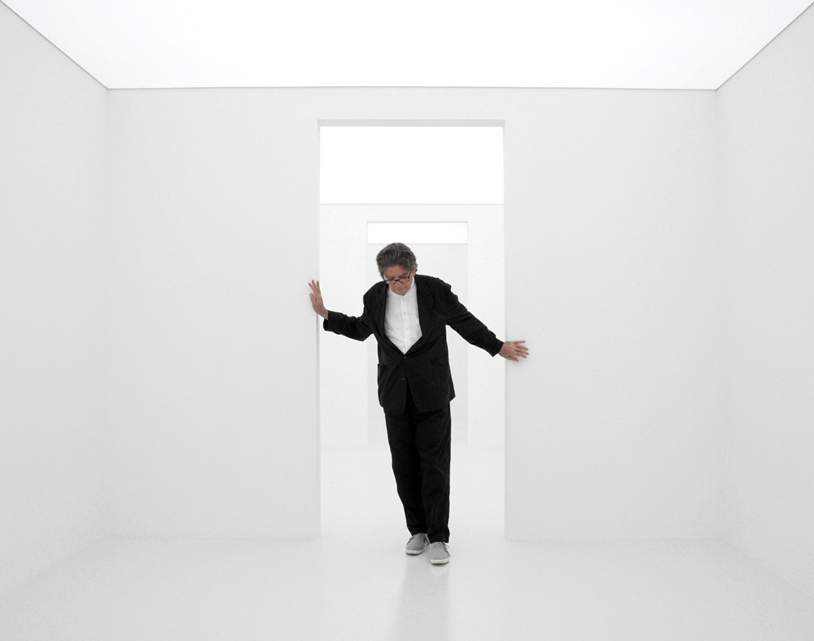
Ettore Spalletti was born on January 26, 1940, in Cappelle sul Tavo, a small town in the province of Pescara, Abruzzo. After completing his studies, he moved to Rome to study set design at the Academy of Fine Arts. He began producing his first works in the 1960s, and throughout his artistic career he has been present with his works in the most prestigious Italian and international exhibition venues. He has, in fact, participated in Documenta in Kassel (1982 and 1992) and the Venice Biennale (1982, 1993, 1995 and 1997), while his solo exhibitions have been mounted in Paris, New York, Antwerp, Strasbourg and many other major cities. In addition, a comprehensive retrospective exhibition was dedicated to him in 2014, held at MAXXI - Museo nazionale delle Arti del XXI Secolo in Rome, GAM - Galleria Nazionale di Arte Moderna in Turin, and MADRE - Museo di Arte Contemporanea Donnaregina in Naples.
In Pescara, he designed the Fountain at the square of the Palazzo del Tribunale in 2004 and received an honorary degree in architecture from the University of Studies “Gabriele d’Annunzio” in 2017. Spalletti passed away on November 11, 2019, in his native Abruzzo, specifically in the town of Spoltore where he had established his residence. He always maintained a very intense connection with his homeland, and the very colors of his works are reminiscent of the landscapes of the Abruzzo coastline. An exhibition entitled Il cielo in una stanza (The Sky in a Room ) was recently dedicated to him in 2021 at the GNAM - National Gallery of Modern and Contemporary Art in Rome.
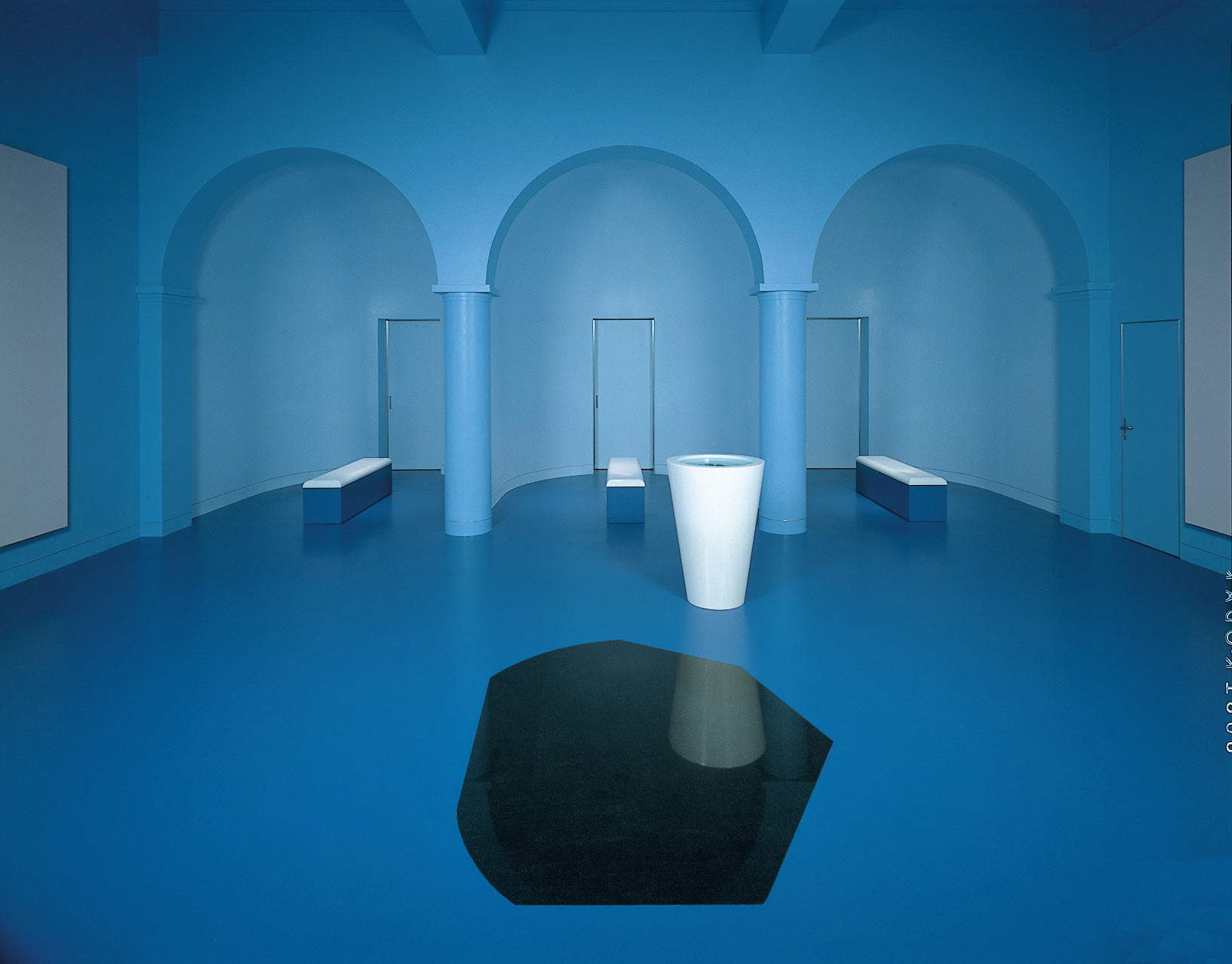
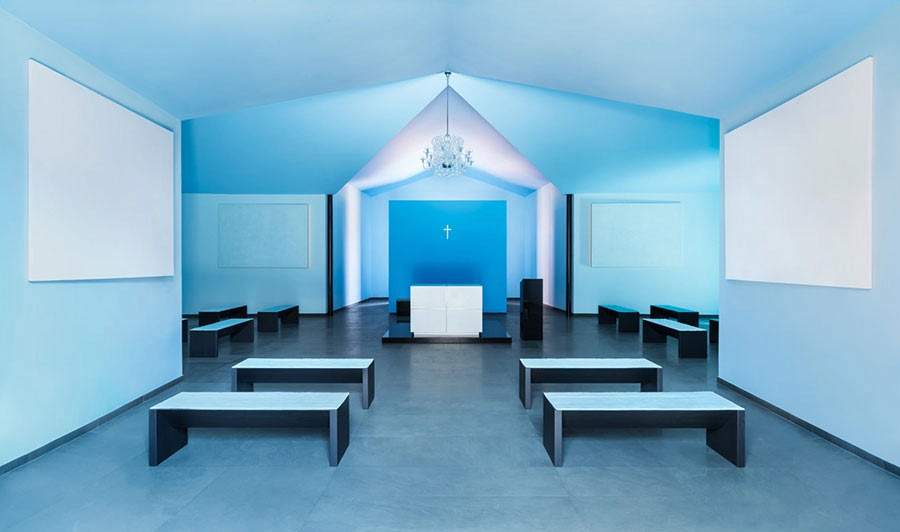
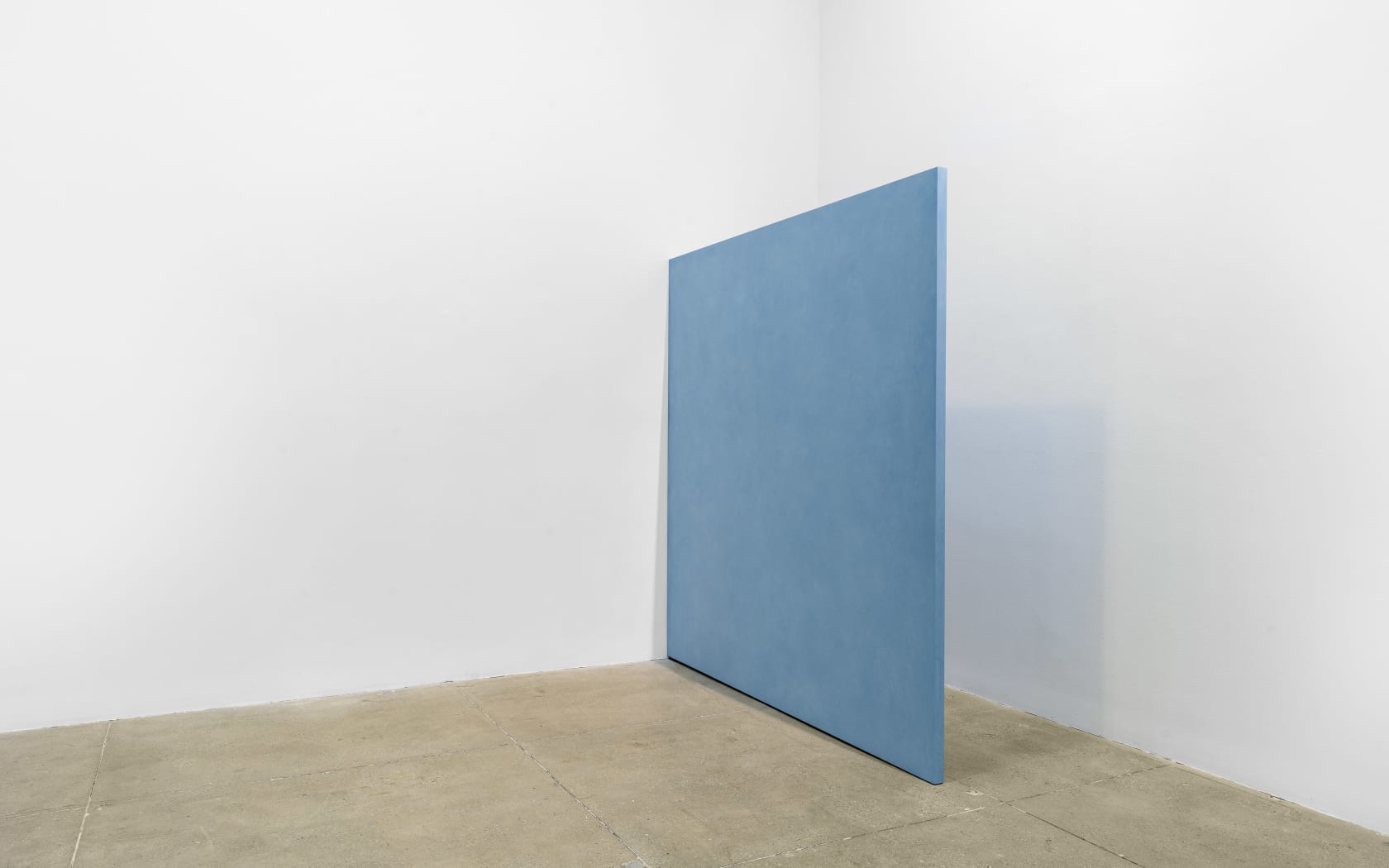
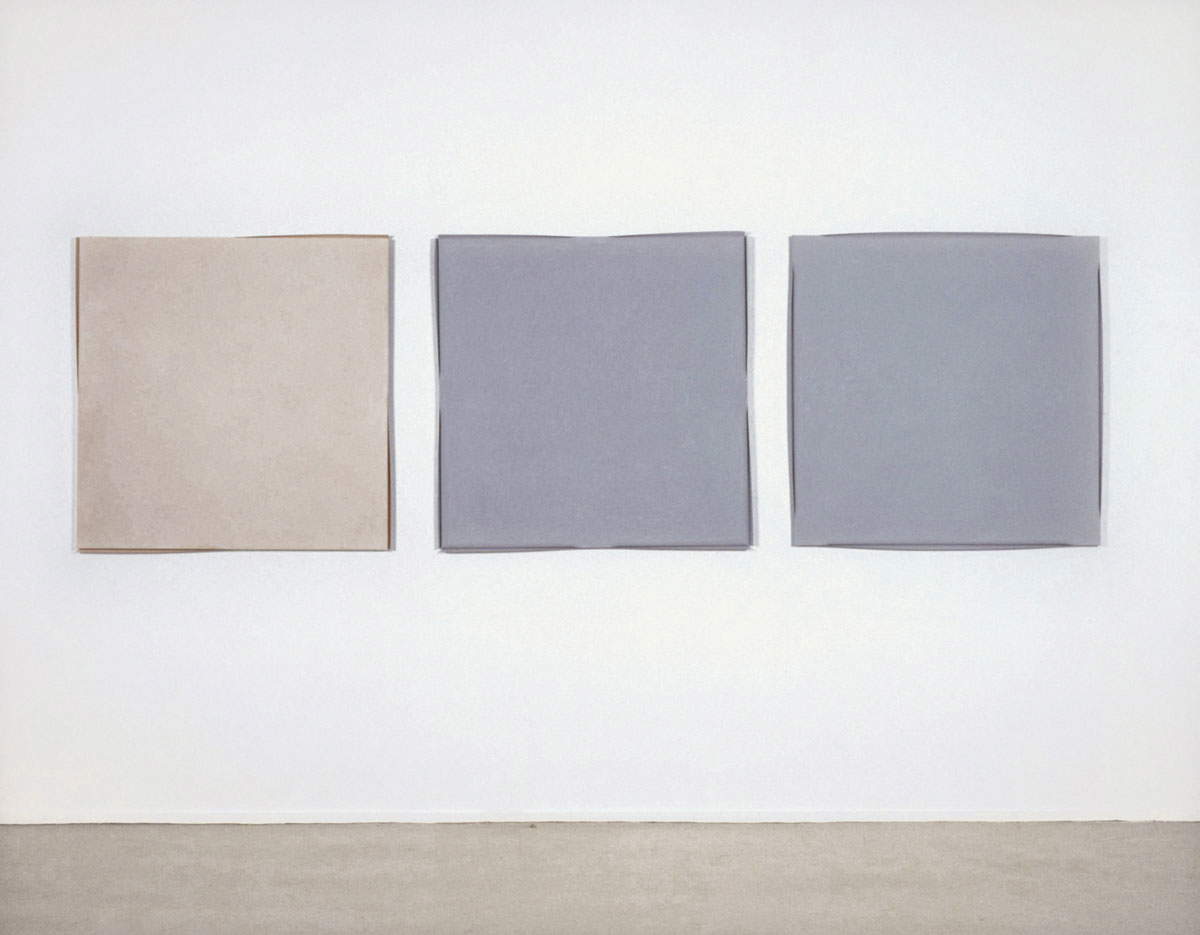
The sculptures made by Ettore Spalletti during his youth in the 1960s are mainly minimal figures in wood and marble, enriched with monochromatic colors. On the surface, the sculptures look simple, but in reality they conceal elements that are visible upon closer inspection, namely layers of paint laid one on top of the other and lumps of rough material. Already from these early works the particularity of Spalletti’s technique becomes apparent, which consists of a combination of sculpture and painting, creating on a plastic level the base on which colors are then spread. Also very important for Spalletti is light: it is no coincidence that he immediately incorporates Plexiglas into his compositions, as in Curva 32 (Struttura), 1966.
Spalletti was greatly impressed by the psychological current of Gestalt, whose name comes from the German verb gestalten, meaning “to put into form” or “to give a signifying structure.” This theory was based on the concept that a set of elements is different than the sum of its individual parts (and not greater quantitatively nor better qualitatively). To give an example at the societal level, the characteristics of a society do not correspond to those of the individuals that constitute it. This gives rise to the belief that everything we experience, and in general our behaviors, are the result of a complex organization. The theory, moreover, explained how in order to know and understand the world, man tends to find forms around himself, according to patterns that each of us finds most suitable and which he can choose by imitation, learning or sharing, and that on the basis of these choices each person forms his own thinking, perceptions and sensations, in a totally unconscious manner. Spalletti was greatly influenced by this theory, beginning to reason about the superimposition of lines of various types, straight or wavy, and about the different variations of color and light, which he expresses through a marked manual dexterity.
Spalletti’s works are constructed as rigorous forms, often square, that extend into the surrounding space and modify its initial nature, going to reduce and attenuate it, creating a true symbiosis between the object and the space. Inescapable, then, becomes the observer of the work himself, and only through his presence does the three-dimensional nature of Spalletti’s works reach its fullest expression, as by seeing the work and its expansion into space he recognizes and identifies it. A prime example is the work Spalletti executed for the renovation of the Garches morgue rooms in 1996, in which he uses the color blue to envelop the entire perimeter of the rooms, giving it a feeling of mysticism and sacredness.
The same concept of making the whole space the true work of art, shaping together colors and shapes, full and empty spaces, light and shadow, in order to create a spiritual experience is replicated in the Chapel of the Villa Serena clinic, in Città Sant’Angelo, which he renovated in 2016 together with architect Patrizia Leonelli, his wife. The decoration designed by Spalletti focuses entirely on color, which fills every single part of the chapel including the ceiling, the floor and the furnishings, which are by the way all designed by the artist himself, from the altar to the tabernacle, from the stoup to the kneeler. There is a statue of the Immaculate Virgin Mary, which is wrapped in a powder blue color and depicted with her arms spread wide as a symbol of welcome. The colors vary between light blue, blue, green, pink and gold, and the hues are enhanced and intensified by the encounter with the chapel’s many light sources, both natural (such as the slits) and artificial. The dark stone floor itself and the marbles reflect the light, creating a suspended and spiritual atmosphere.
Color, after all, is a founding element of Spalletti’s art, which repeatedly emphasizes its dynamic nature. Indeed, he was deeply fascinated by the way color changes upon contact with light, even leading to new, unexpected results, which he felt it was essential to accept and embrace with great curiosity. On a technical level, Spalletti had identified proven timelines for applying color, applying it to the designated surface about ten to fifteen times and then waiting for it to dry. After the necessary time had elapsed, he would devote himself to observing the moment when the color paste crumbles, returning a new surface in which the boundary between color and underlying material is completely crossed, and it is no longer recognizable where one ends and the other begins. Or, after preparing and laying down a mixture of glue, plaster and pigment, he would work the surface of the color to create a powder that the work would seem impalpable.
Various colors recur in his production, each of which has a precise meaning for Spalletti and which he actually considers “non-colors” because they do not exist in nature. Moreover, the most recurring colors are reminiscent, not surprisingly, of the hues of the Adriatic coast of Abruzzo; in fact, we find light blue, pink, gray and white.Light blue is an atmospheric color for him. These are his words, “It is not a surface color and is constantly changing due to radiation, the color of the sky and the sea, a color that is transparent in which we are always immersed and lives as an environmental condition that we have around us.... A color that has its own magic. Light blue does not exist in nature, one finds it only in an impalpable reality, which is not surface, which is depth.” Pink is for Spalletti the color of the incarnate, "it is in constant mutation, it has no fixity of its own feeding on the moods of its spiritual conditions. Gray is a neutral color, which has the ability to accommodate all other colors, which is why he calls it the “color of welcome.”
Spalletti’s best-known works include Presenza stanza (1978), an ’impasto of color spread on a wooden board. Then there is a group of works that are very similar in their basic setting, by the way, all also present in the same exhibition venue at the Castello di Rivoli, namely Sogno Dispari (1983), Dono (1991) and Muro, eco rosso azzurro (2003), which are partially detached from the wall and become examples of asymmetrical geometrism, that is, they maintain the rigor of the forms but go beyond the symmetrical arrangement that is expected of this type of setting.
The relationship between the work and space is also investigated through a sculpture that becomes an urban object that goes on to redesign its surroundings. This is Fonte (1986) made of limestone from Abruzzo’s Majella mountain. Finally, also peculiar is his unique photographic work entitled Vaso (1981), in which we see a male figure (probably the artist himself) watering a sort of inverted vase that becomes a geometric figure that is cultivated and cared for, thus metaphorically expressing the desire to make sculpture alive.
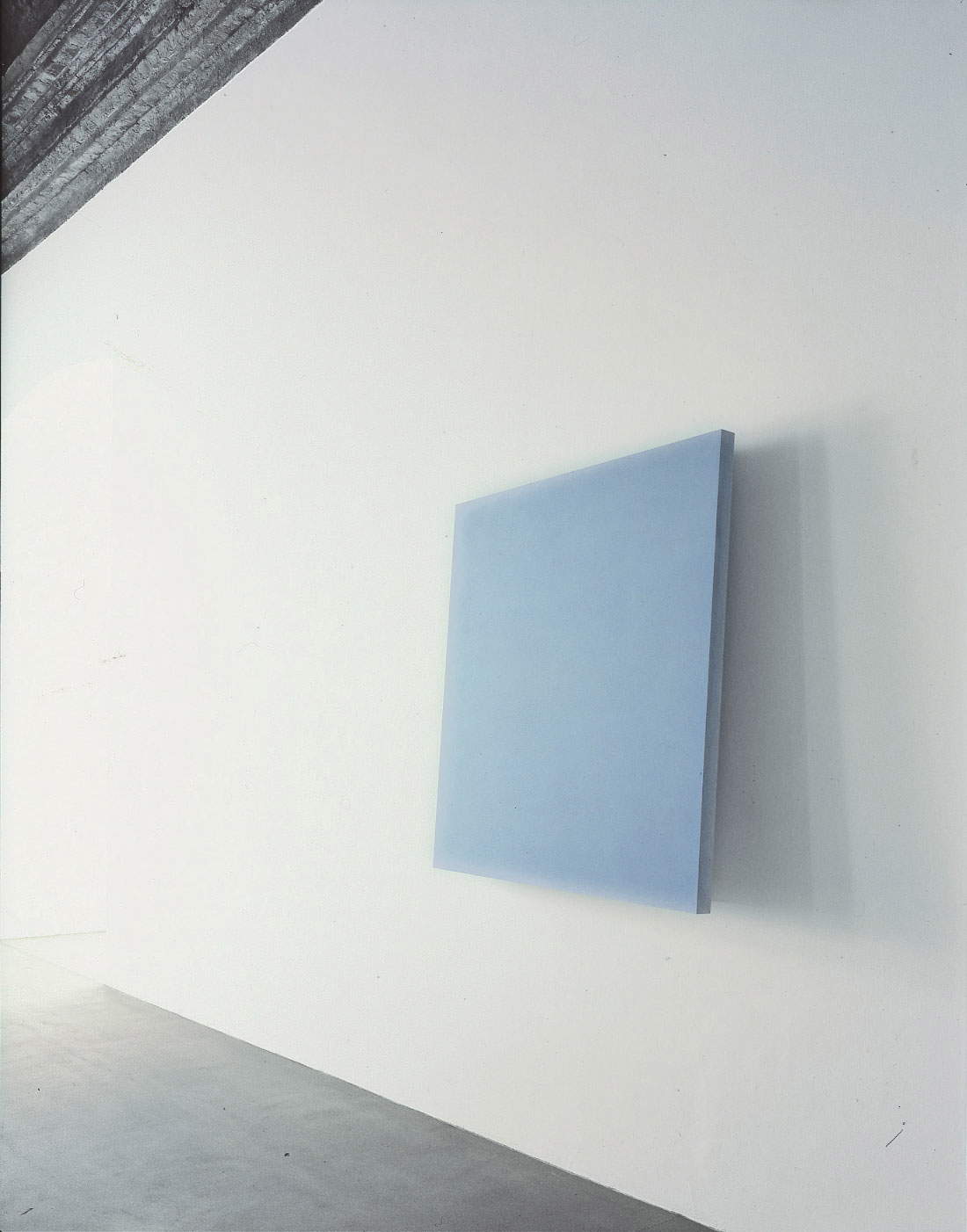
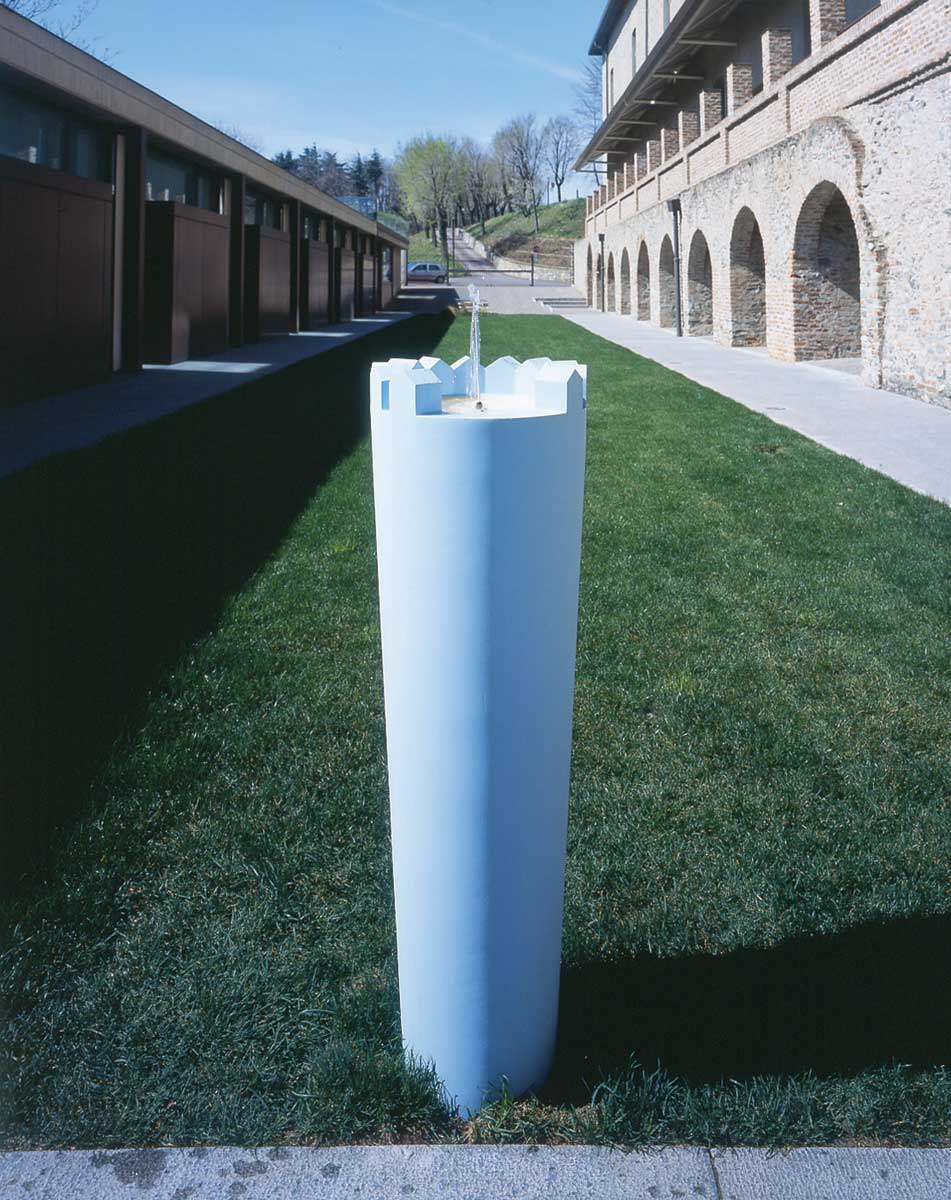
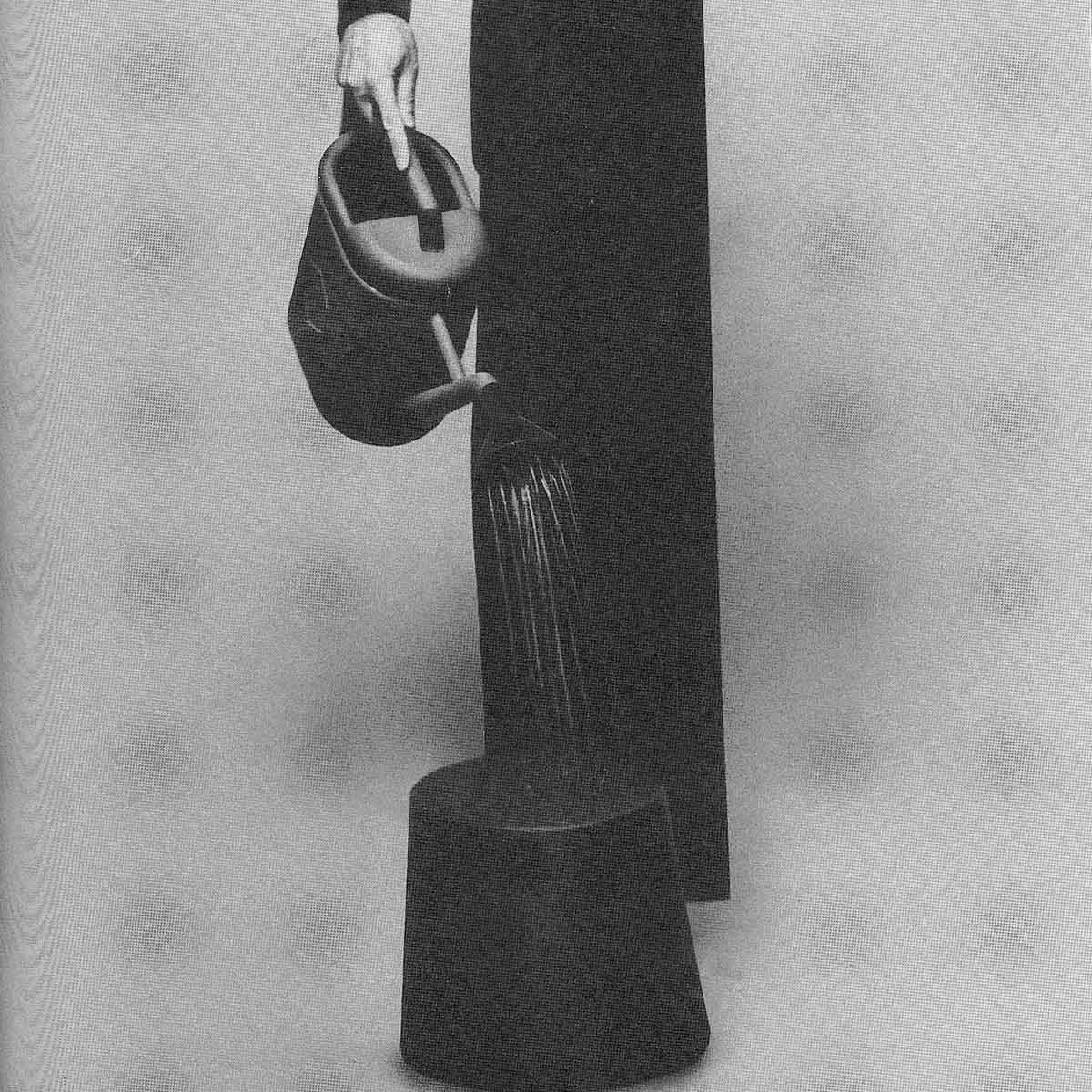
In Abruzzo, his home region, there are works by Ettore Spalletti on public display, including the Fountain in Piazzale Troilo (Court) in Pescara and the Chapel in the Villa Serena health complex in Città Sant’Angelo (Pe).
Other works by Spalletti are preserved in several Italian museums. A group of works is located in the Villa Menafoglio Litta Panza in Varese that belonged to Giuseppe Panza, a great admirer and collector of contemporary art and of Spalletti in particular. In the Villa, Panza converted his and his wife’s bedroom and also a room of two of his five children into exhibition rooms totally dedicated to the author. Among the works in question are Neutral Gray Wings (1988), three versions of the Vase (1988, 1989 and 1992), Acquasantiera (1986), Vertical Rose (1991), and Tutto tondo (1989),
In the Museum of Contemporary Art at the Castello di Rivoli are numerous works by Spalletti, namely Presenza stanza (1978) Sogno Dispari (1983), Dono (1991), Muro, eco rosso azzurro (2003), Quartetto, rosso porpora 1991), Fonte (1986), Scoglio (1997), Vaso (1981). In the Palazzo dell’Arte in Rimini it is possible to admire Stanza bianca, alabaster vase (1996). Finally, many works are kept in Studio Spalletti, and are often requested for some exhibitions, both in Italy and abroad.
 |
| Ettore Spalletti, the blue artist. Life, works, style |
Warning: the translation into English of the original Italian article was created using automatic tools. We undertake to review all articles, but we do not guarantee the total absence of inaccuracies in the translation due to the program. You can find the original by clicking on the ITA button. If you find any mistake,please contact us.